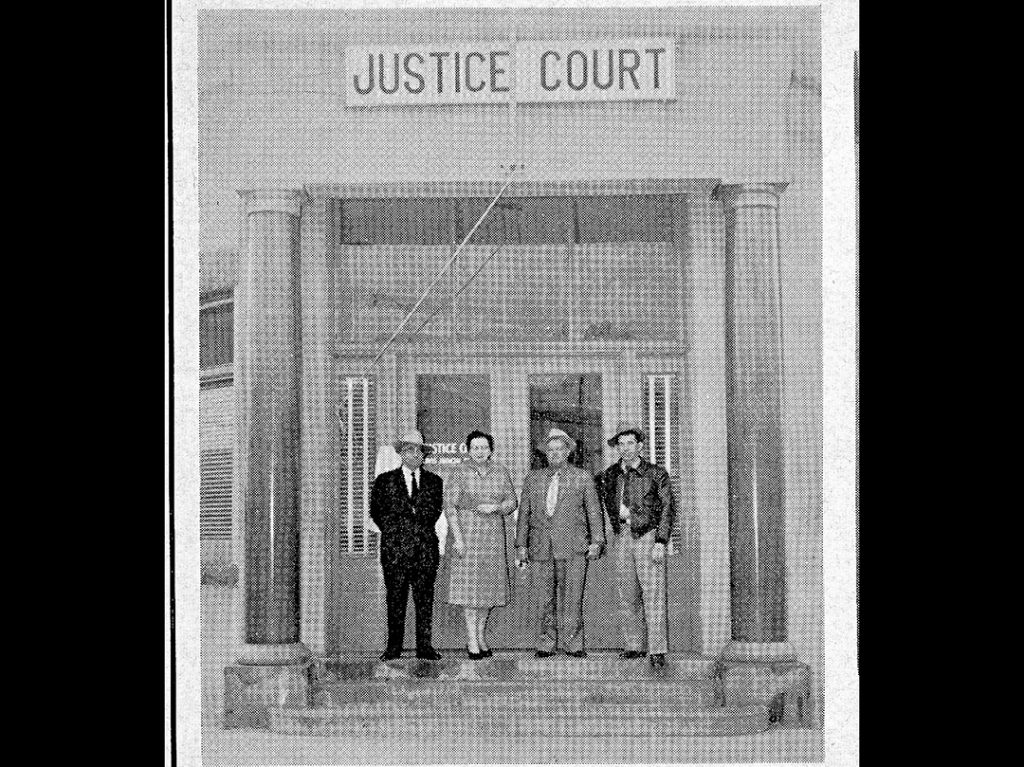
Mary Grace and her husband Bill were active in our community. She was inducted into the Clovis Hall of Fame in 1980. Bill was a volunteer fireman for 32 years. Mary Grace served as Court Clerk at the Clovis Justice Court (located at 401 Pollasky which is now the Clovis Museum) for many years.
Her Grandmother Emma Cole Heiskell Family (William T. Cole) arrived at Academy in 1876. Emma was their first child to born there. She attended the 1870 Academy school. All of their ten daughters (Sally Sample, Alice Hoskins, Mary Stroud, Angeline Birkhead, Jane Estill, Ida Bell, Kate Shafer, Grace Hogue and Harriet Blasingame) were married at the family home.
William Temple Cole (1825-1907) and his wife Jane Sweany Cole (1830-1927) remained at their Academy ranch (three thousand acres of grazing and wheat land) for thirty years.
Jane Cole (“Grandma Cole”) moved into Clovis in 1910. She was active in the Methodist Church and the Jane Cole Circle was formed. It is believed to have disbanded in the early 1990’s.
We conclude Mary Grace’s article that was printed in “Images of an Age Clovis” that was published by the Clovis Unified School District and the Clovis Community Bank in 1984.
“The whole manner of courtship was different, way back then. It was much slower than the pace today. Being the only child, I was awfully slow to catch on. I must have been a senior in high school before I had the nerve to have a boy call. I’ll tell you where my time was spent—-with friends. All Saturday and Sunday, plus evenings, we had a band. Earl Nevins was beating the drums and Merle Good was playing the saxophone and they knew where we were because we were very noisy. Well, the Good’s home and ours were open to the band. We would have several saxophones and trumpets, and a drum was very necessary. But you could do a lot with a saxophone, a piano, and a drum set.
We would play at dances, upstairs where the apartments were, above John E. Good’s Store or above the antique store. There was a large dance hall and lodge hall up there. There was also one across the street in what they used to call the “500 Club”. It was quite a hall; then there was the Legion Hall, too. Some of those people had a dance once a month over a period of several years.
And there were lots of parties given at the Women’s Club House. This was during a time when money was very, very scarce, so playing was a glorious experience — and we made a few dollars. We made our two dollars a week. Once we were approached and I could have made $50 a week. Now that was a pretty large sum for a woman back in ’32. Things came up and I had to pass it by.
I can think of a few amusing incidents which occurred during the first years of “local option.” Once, officers raided the home of a suspected bootlegger and seized several gallons of liquor. The bootlegger was released on bail and the liquor was locked in a closet in City Hall. In a month or two the trial of the bootlegger began. All went well until the court produced the evidence: yes, some lowdown son-of-a-gun had somehow gotten into City Hall and removed all of the confiscated booze. Local option presented a lot of embarrassing problems to local peace officers.
People made it at home — liquor, wine. Another girl and I made beer. We got some malt and put a lot of sugar in. We got some bottles and capped them. It all blew up.”
Mary Grace and her husband Bill remain an important part of our rich heritage.








